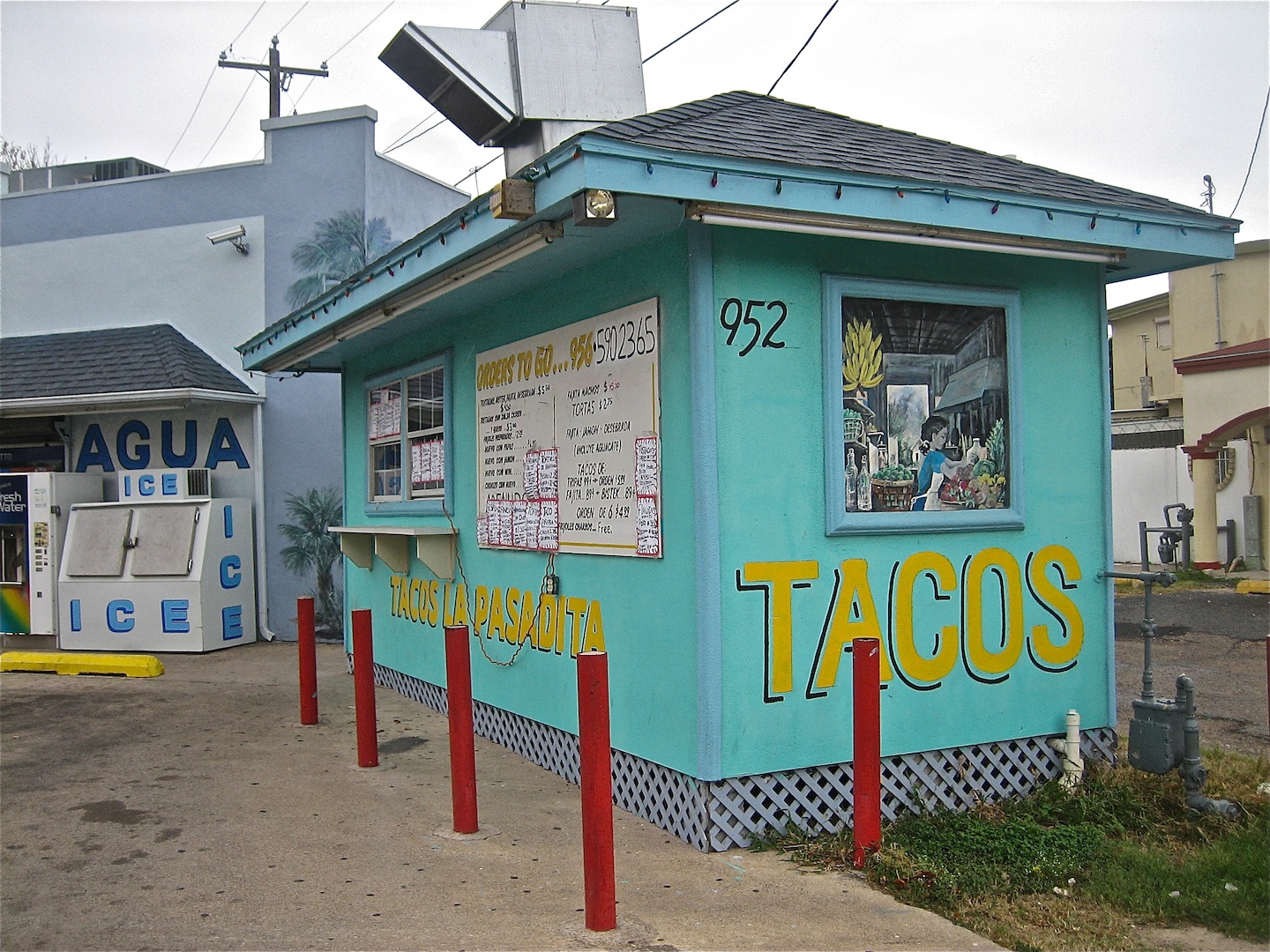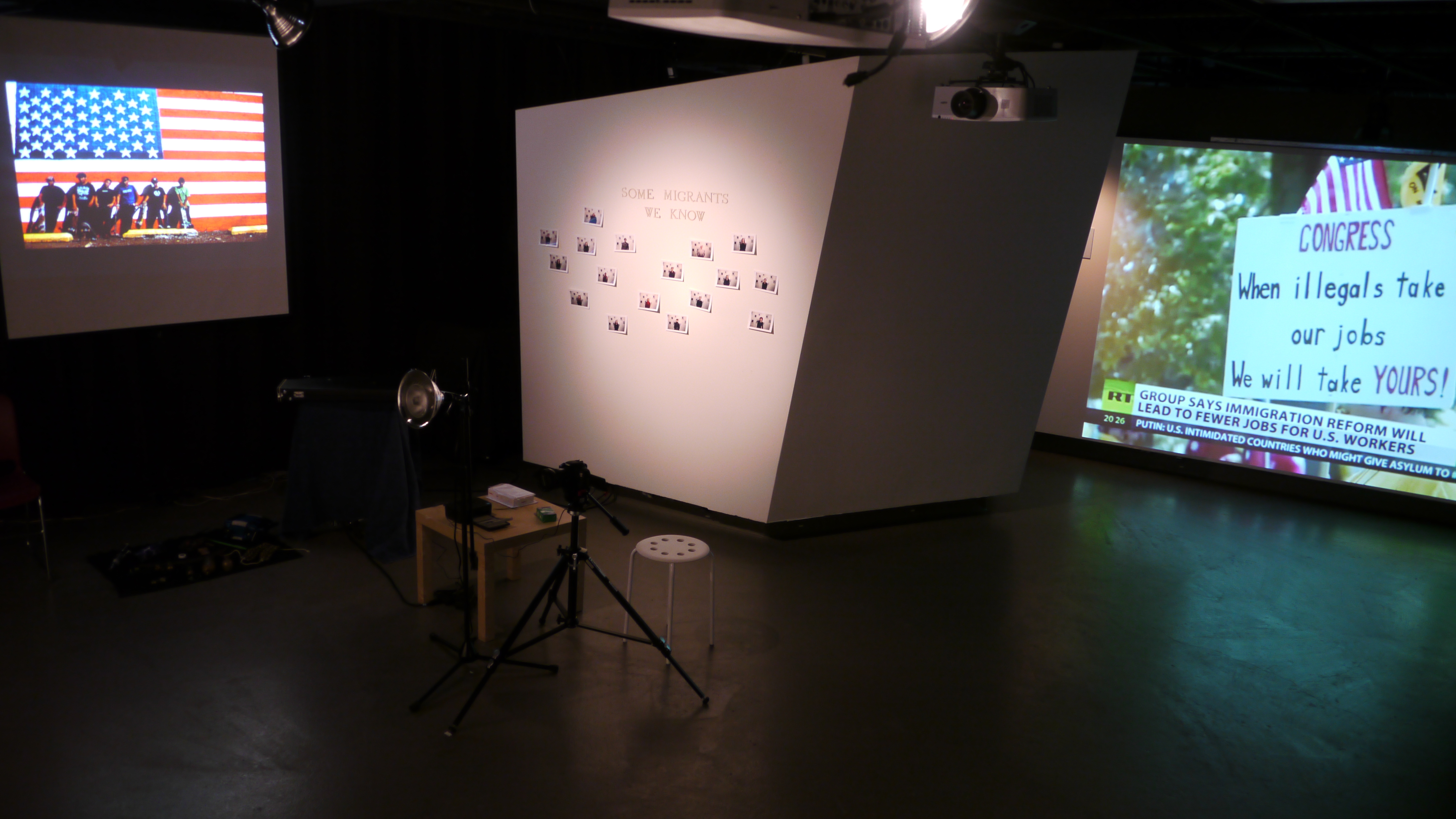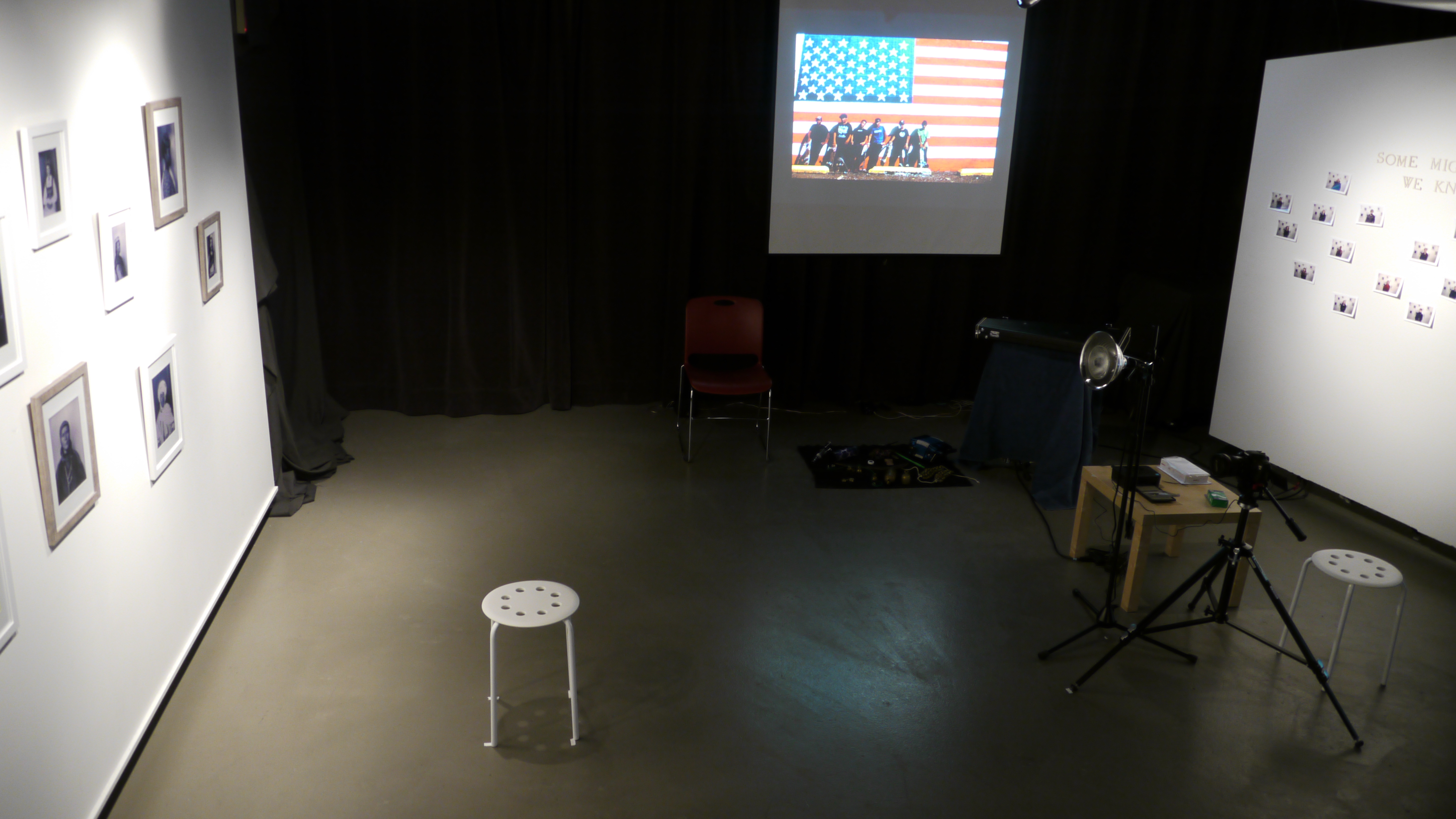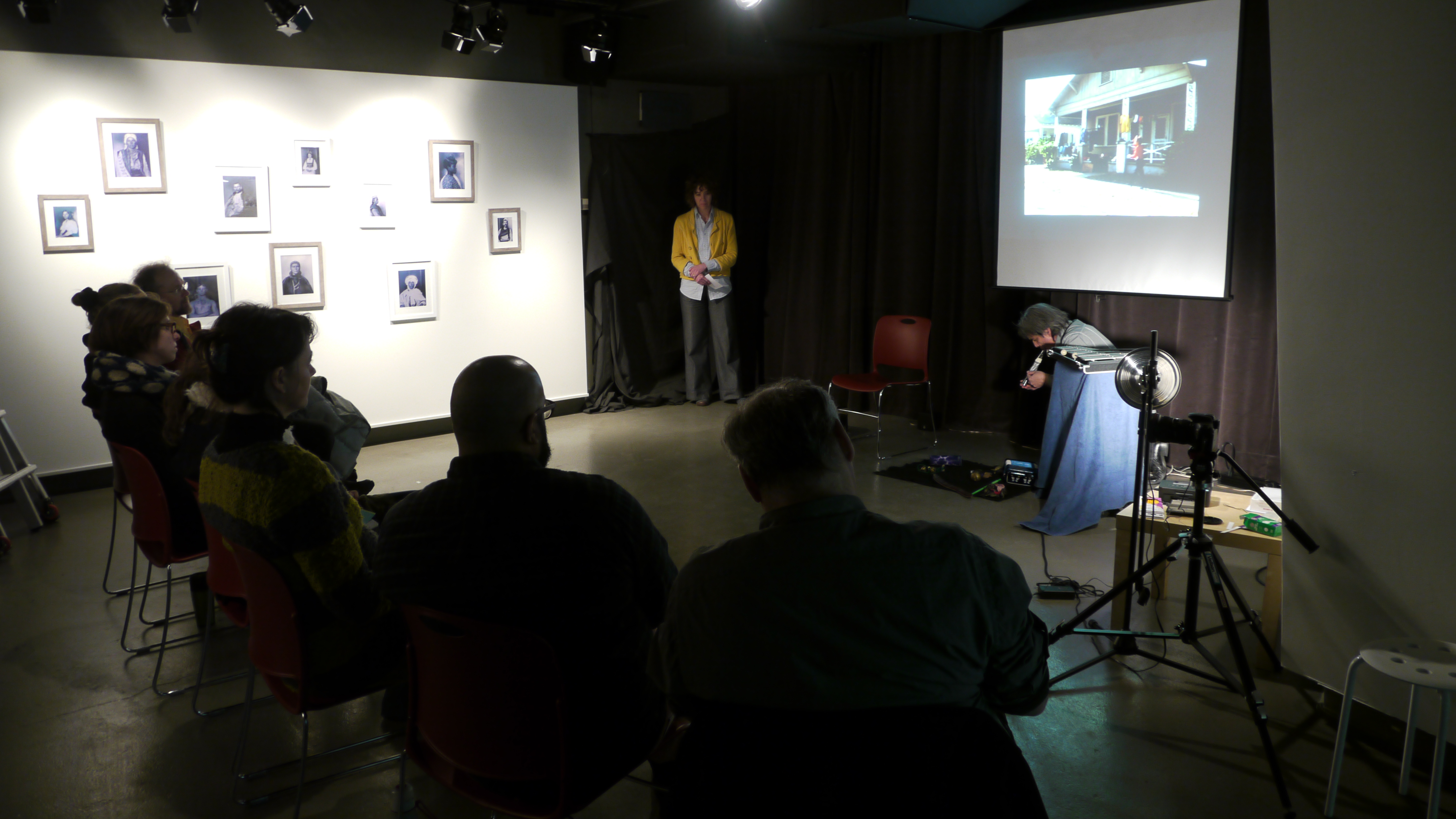
Residence Reflections: Gaelyn and Gustavo Aguilar of TUG Collective

The authors of this post, Gaelyn and Gustavo Aguilar of TUG Collective (University of Maine at Farmington), first worked in the CEREV Exhibition Lab as part of our working group at the Hemispheric Institute’s Encuentro. They returned to CEREV in February 2015 for a week of seminars, exhibition experiments, and performances.
Having spent a week in the Exhibition Lab, as part of the Hemispeheric Institute of Performance and Politics Encuentro session in June 2014, we were keen to return to CEREV to continue tweaking with the curatorial aspects of our project, Who Eats at Taco Bell?, with the goal of fostering critical feedback by widening the circle of collegial engagement.
Coming off a mid-term election year, in which fears of ‘illegal immigrants’ taking jobs and other socially-valued resources away from people who ‘belong’ were strategically stoked, once again, among voters across the United States, Who Eats at Taco Bell? is a socially-engaged performative re/search platform for thinking about how the interlocking dynamics of immigration, social race, and colonialism in U.S.-American history continue to resonate with personal and political notions of movement, belonging, and identity. Our goal with this project is to create a collaborative situation for kindling critical (but accessible) discussion about immigrant incorporation and cultural citizenship, and “to provide a framework,” as multidisciplinary artist Pablo Helguera would put it, “on which experiences can form and be directed and channeled to generate insights”—in this case, insights about one’s own personal experience with movement (or lack, thereof), the presence of difference, and how our lives are inextricably tied up within the lives of others. Although there will be multiple antecedents propelling our project forward, the ultimate vehicle for creating this collaborative situation and framework will be a three-month expedition on the Lewis and Clark Trail (a trail that was forged by an expedition that took place from 1804-1806 and whose records and maps played an important role in Euro-American expansion across the North American continent), in the summer of 2016 leading up to the U.S. Presidential Election, with a taco bike/cart, making tacos for people with whom we come in contact and activating participation via a multi-sensorial/multimedia installation, all in an effort to seed and extend conversations about what it means to inhabit a place, at this particular point in time.
Because there are many points of mutuality between our project and CEREV’s mandate as an interdisciplinary contact zone for work that emphasizes participatory and practice-oriented ethnographic research and curation, we could think of no other more appropriate context in which to workshop the multi-sensorial/multimedia elements that we will be carrying along with us, and activating, while on the expedition. An audience of predominantly Canadians might seem an unlikely choice for providing critical feedback on a project that deals with historical and contemporary experiences specific to the United States. We saw this residency, however, as an opportunity to present our work to a fresh set of eyes. What might we learn through other relations that history has with the present? Would the multi-sensorial/multimedia elements of our project generate insights about one’s own personal experience with movement, belonging, and identity, and extend deeper readings of local manifestations of contestation, collaboration, and transformation with respect to the themes of our project?
No taco cart for making tacos during the residency! Instead, with the indefatigable guidance, friendship, scholarly and administrative support of Lex Milton, Shelley Ruth Butler, Erica Lehrer and Mary Caple, we installed various scenarios around the Exhibition Lab. We projected a video mash-up that juxtaposes anti-immigrant news clips with snippets of TV commercials from the 1950s to the present that showcase the level of integration of ‘Mexican’ food into American food habits. The goal of this media portal was to uncover, through an aesthetic practice of display, what lies hidden—the cognitive dissonance of hating a people but loving their food.

Not far from this was ‘Some Migrants We Know,’ a participatory diptych—part portrait studio, part co-created exhibition. Participants were invited to sit for their portrait in front of a wall of historic portraits, reprints of some of Augustus Sherman’s iconic (and problematic) images of immigrants who passed through Ellis Island in New York City. A photo was snapped and immediately printed, allowing the participant to add their image to a growing bank of portraits on an adjacent wall identified with the heading ‘Some Migrants We Know.’ We were hoping that this element of our artistic vision would open up gaps between one set of representations and another, even as it served to re-awaken in participants an acknowledgement of their own ‘alien’ status.

Another space of activation was Small Acts of Repair, a participatory, momentary live installation that occurred in the Exhibition Lab in which snippets from a performative multi-media work of ours that was created in collaboration with over 50 citizen volunteers and that speaks to the recuperation and expansion of what it means to be an American of Mexican descent, born and raised along the U.S./Mexico border—a fuzzy frontier that has been in the crosshairs of politicians and policy makers who feel pressured to keep inimical forces (such as the movement of human migrants) at bay with the building of a wall—were interrupted by action and activity in which the roughly 12 participants who were in attendance were asked to think about something that is broken and then to imagine how it might get fixed.
Because Who Eats at Taco Bell? is a socially-engaged, performative re/search project, through and through, with dialogical and collaborative structures generating the bulk of the work produced, it has been imperative for us to undergird these structures by getting our project ‘out there,’ by falling into a space of dialogue and action in which the work is always in a state of co-creation. We are indebted to CEREV for providing the space and the bright minds to help us to play, to take risks, and to gauge the efficacy of our project. Adelante!



